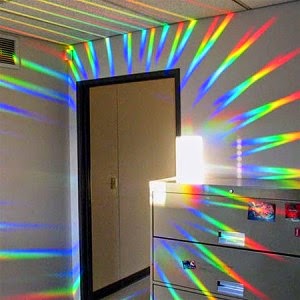After gaining a better understanding on how natural and artificial light is used in architectural spaces, I turned my focus on how lighting evokes and effects emotions in people from this research I found -
—People tend follow the brightest path in a space
—Brightness can focus and attract attention
—Facing wall luminance is a preference
—Lighting can affect body position
I will need to consider all this when designing the light. It will be the main focal point in a room and will illuminate the space by light effects. I thought about ways to create reflections and shadows. To gain inspiration I looked at more innovative ways light is used to create effects.
3D Projection Mapping - is the method of projecting an image on a 2 dimensional surface or plane. When looking at the scene the objects in the distance appear smaller then the objects close by. I found this projection show very interesting to watch left me thinking of ways to create similar illusions without a projector ?

Newtons Prism Experiment - proved that natural light was a combination of colours which we now call the colour spectrum. The image on the right shows how when light is refracted at a certain angle onto a prism a spectrum of colours are formed. To prove his theory he placed another prism upside down in front of the first prism, and the band of colours combined again into white sunlight.
I will produce a range of experiments based on this research to refract light and create effects using both natural and artificial light. The effects on the image are formed when natural light hits the prism shape although this particular image may have been enhanced using Photoshop.
Another way I could create effects is by designing a light shade which casts shadows.
Although this technique produces effective outcomes my design will have to be innovative and original, as there are many similar light products in the market. The forest chandelier was designed by a pair of Danish artists who where inspired by nature and the drawings of the German naturalist Ernest Haeckal. It creates a virtual forest and as the light intensifies the room changes slowly becoming more fascinating. The chandelier pieces are made on a 3D printer, the hardened plastic powder withstands the heat from the LED lamp.


No comments:
Post a Comment